Matching food and wine: a tarragon custard on raspberry purée dessert with sweet Riesling
With the raspberry season coming to an end, it is high time to write up what is one of my favourite desserts and also one of my favourite wine and food pairings: tarragon custard on raspberry purée with a lovely, sweet Riesling from the Mosel. This recipe brings together sweet, sour, acidity, bitterness, fruit and a herbal creaminess - components that are present in both wine and pudding.
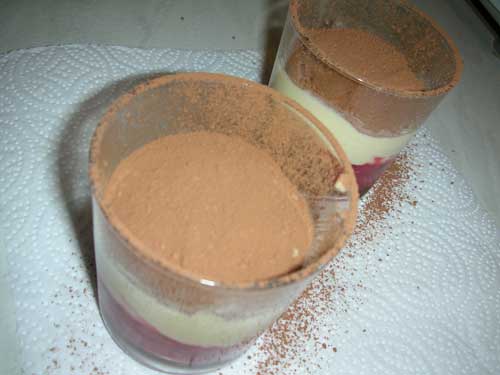
You will need for this (for four): raspberries (200g), sugar (50g), fresh tarragon, 4 eggs, double cream (150ml), milk (150ml) and cocoa powder. And a sweet Riesling, of course.
Start with a medium-hot frying pan, a little sugar and most of your raspberries (just set a few aside for decoration). Cook the raspberries with the sugar until the berries have completely fallen apart, maybe moving the process ahead a little by squashing particularly resistant buggers with a wooden spoon (something I do for fun). Taste the purée, perhaps adding a little more sugar - be careful though, you don't want to make this too sweet, just a little more sweetness to bring out the bitter-sweet of the fruit.
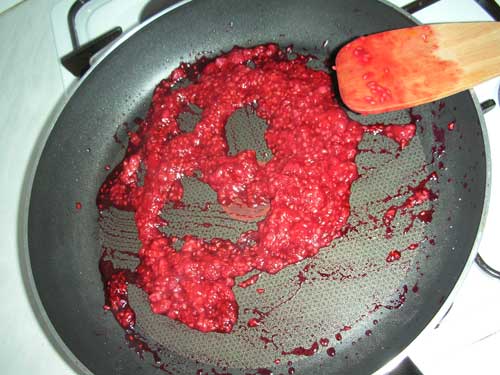
You can put the purée through a sieve, but I prefer to keep it as it is, giving it a little more texture. The purée then goes into smaller glasses and into the fridge once it has cooled down a little.
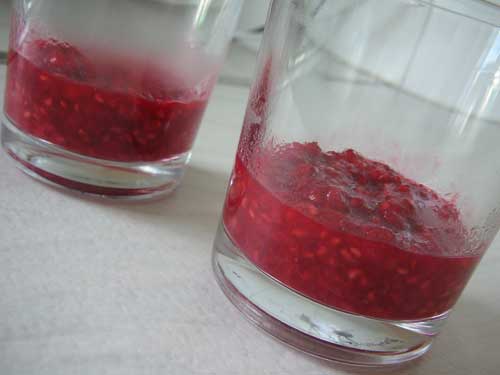
The next step is to mix the egg yolks and the rest of the sugar. I find this goes best with a fork, at least initially. You want to get the mixture as creamy as possible, so it is worth spending a minute more on it.
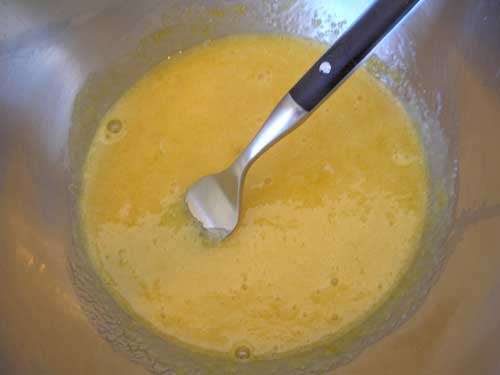
In the meantime, bring the mixture of cream and milk to a boil, add the tarragon and leave to infuse for ten minutes or so; turn the heat off though.
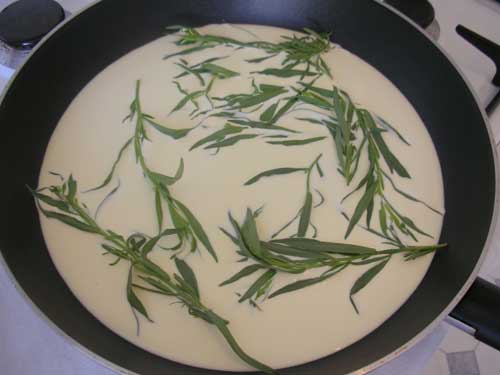
This would be a good time to have a look at the wine. For a dessert like this I prefer a wine that is sweet, but not as heavy as, for instance, a Sauterness; a Mosel Auslese Riesling should bring just the right level of acidity and sweetness to the mix. Unless you have a well aged example, it may be worth having a glass right at this stage so that the wine in the bottle can breathe a little until the dessert is ready (and so that you can see how the wine develops). Also remember, wine is a key ingredient for successful cooking! This is the wine I went for:
Reinhold Haart, Riesling Auslese 2006" src="/sites/default/files/images/desserthaart06.jpg" width="500" height="375" align="center" class="inline inline-center" />
After you have tested the wine for its suitability, remove the tarragon from the pan, heat the mixture up again and add the egg-sugar. You want to keep a close eye on this, stirring it constantly while the custard thickens, to avoid building up of small lumps and to keep it from getting too thick.
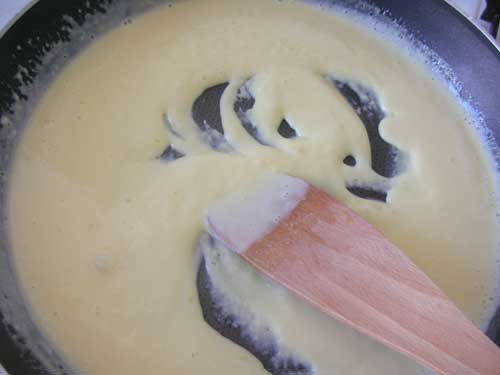
When the custard really starts to thicken, turn off the heat and pour the custard into a bowl or other suitable container and leave it in the fridge to cool for a few hours.
Immediately before serving, carefully spoon a layer of the custard over the raspberry mouse and dust the dessert with cocoa powder. Ideally, you'd want to decorate the pudding with a raspberry, but it seems a greedy person had eaten the ones I had reserved for this purpose...

And then it is game time! The dessert is certainly one of my all time favourites, a delight on its own (thanks to Gordon Ramsay for the recipe - he uses less raspberry though). The raspberry purée is sweet, but it also adds bitterness and acidity, which makes it an exciting partner in the dialogue with the custard. The custard ideally is creamy, sweet, but not overly, and the tarragon adds an unexpected, herbal note to it that makes for a perfect balance, especially with the cocoa dusting. Please be careful not to breathe in when putting a spoon to your mouth - inhaling the fine cocoa can lead to an embarrassing situation...
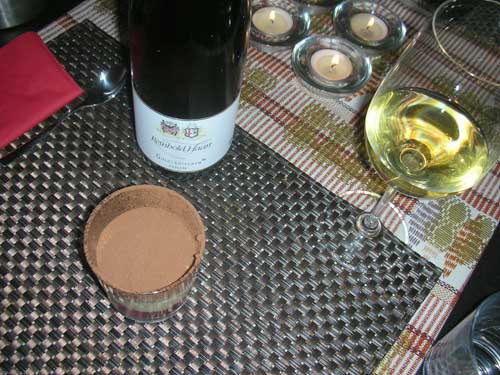
And now the wine. The most important rule for a dessert wine: it has to be sweeter than the dessert. The sweetness in a pudding will make a wine appear much drier than it actually is, which can be unpleasant when you pair a dry wine with a dessert. As our dessert is of course sweet, but not overly sweet, we can go for a sweet wine that is, well, sweet, but not overly sweet. I am aware that the perception of sweetness in a wine differs (especially with people often mistaking fruitiness for sweetness), but for me a good Mosel Auslese Riesling, or even a sweeter late harvest, is just sweet enough to do the job without exhausting me by being too sweet. Also, it is the type of wine of which I happily have more than a glass, whereas with heavy Sauterness, for instance, one sometimes can feel almost too much.
While sweet, the Auslese from the Piesporter Goldtröpfchen adds just the right bit of acidity to the mix to remain lively - and also to match the acidity in the raspberries. Also, it has some similar flavour elements to the dessert: a little fruity bitterness and creamy herbal notes to complement the different flavour layers of the custard dessert. A marriage made in dessert heaven. Enjoy!

YUM! Need to print and
YUM! Need to print and copy....
In reply to YUM! Need to print and by Heike
Re: YUM! Need to print and
Happy to hear you too are tempted by this. It really is one of my all time favourite desserts. So enjoy!